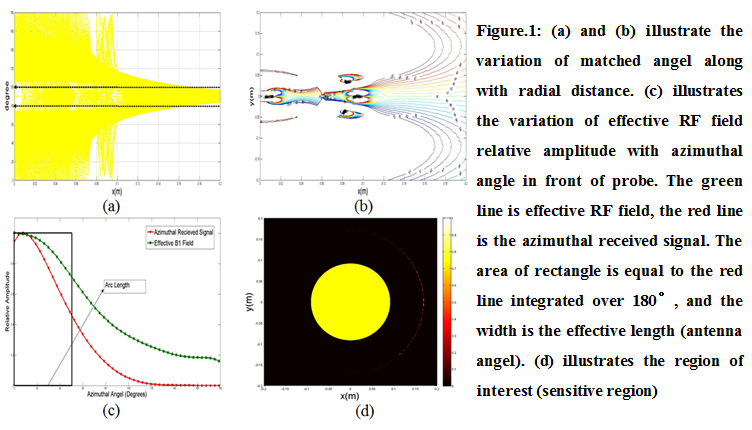Qualitative Evaluation for Downhole NMR Device
- State Key Laboratory of Petroleum Resource and Prospecting, China University of Petroleum, Beijing, China
The probe is one of the main components of downhole NMR device, which is used to polarize underground formation fluids and receive NMR signals [1]. The probe design involves the model building and the confirmation of detailed structures and mechanical parameters of magnets and antennas. The key part of the design procedure involves utilizing numerical simulation to evaluate whether the model is satisfied for requirements or not,and verifying the rationality of the entire design.
The distribution of static magnetic field and radio-frequency magnetic field for the probe was calculated by combining computer aided design (CAD) combined with finite element method (FEM). The result offers some useful information including the matched angel between static field and RF field, the effective RF field, azimuthal signal amplitude, and shape for regions of interest [2] (sensitive region). Azimuthal signal amplitude associated with effective RF field can reflect the effective arc length (antenna angle) [3] . The calculated NMR signal amplitude distribution also can reflect the depth of investigation and thickness of sensitive region. Combining the methods mentioned above can qualitatively evaluate the rationality of probe design for optimizing parameters.

- [1] Coates G R, Xiao L Z, Prammer M G, (1999), NMR Logging Principles and Applications, Gulf Professional Publishing
- [2] Hürlimann M D, Griffin D D, (2000), Spin Dynamics of Carr-Purcell-Meiboom-Gill-like Sequences in Grossly Inhomogeneous B0 and B1 Fields and Application to NMR Well Logging, J. Magn. Reson, 143(1): 120-135
- [3] Reiderman A, Beard D R, (2003), Side-looking NMR Sensor for Oil Well Logging, U.S. 6580273
